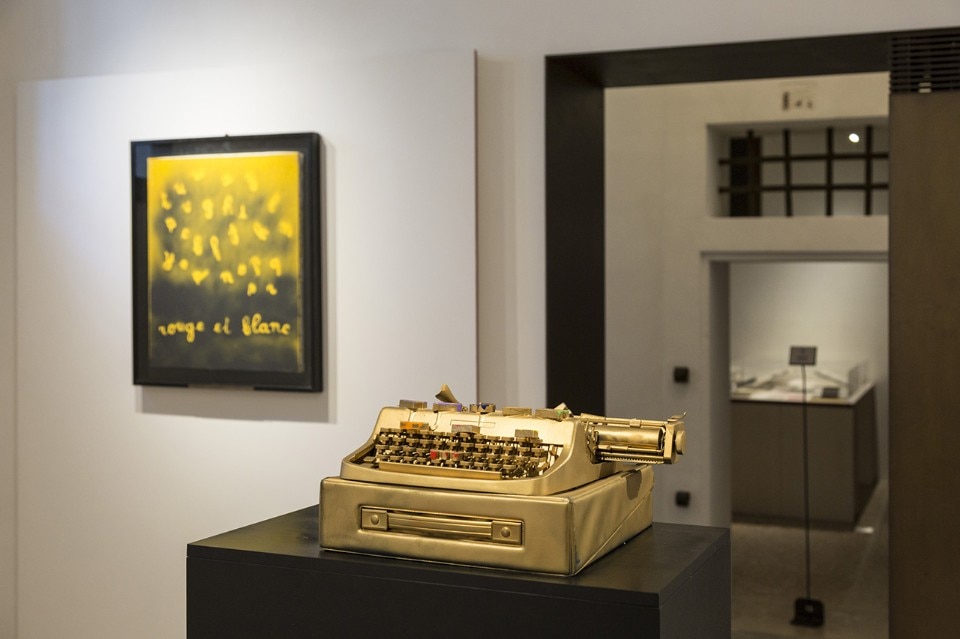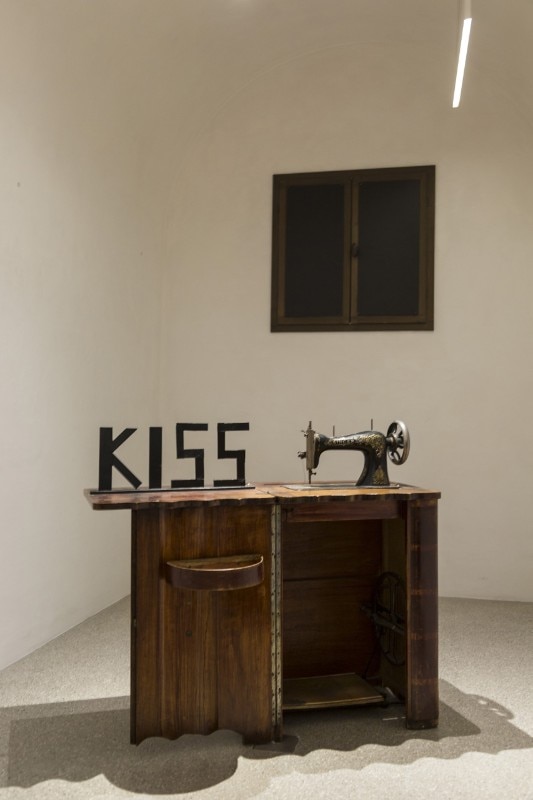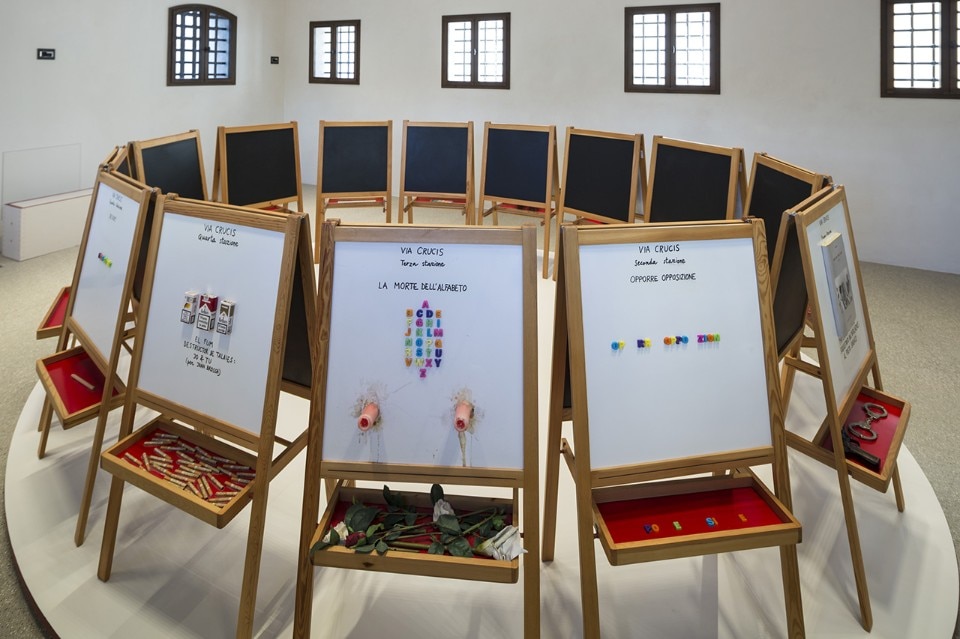The claustrophobic spaces of that which was once the prison for the city of Treviso have been transformed through the restoration guided by Tobia Scarpa into small cells for reflection which serve as the exhibition areas of the Imago Mundi – Luciano Benetton Collection.
The third exhibition to be presented – “Poetic Boom Boom” – is based on an examination of Visual Poetry, a wide-ranging movement with many factions which has transformed words into a revolutionary weapon. The curator of the exhibition Mattia Solari tells us about the project.
At the entrance to the exhibition, visitors are welcomed by the work Gedicht match frei, 2002 (Poetry sets you free) by Sarenco. The historical context of the Nazi camps, faithfully evoked in the sculptural forms, is also found in the message created by the words. Can you tell us about the decision to place this work in front of a venue with a very specific history such as the Gallerie delle Prigioni?
The Gallerie delle Prigioni is located in the ex-Habsburg prison of Treviso. The placing of this work at the entrance was for us a clear sign both for the reference to the entrance to the Nazi camps and for the fact that visitors will be entering a prison which was active until just after the Second World War. With this invective, “Poetry sets you free”, typical of the caustic and ironic language of Sareceno, the artist subverts the message and provocatively substitutes Arbeit (“work”) with Gedicht (“poetry”), suggesting to all those who cross the threshold and enter the exhibition that quality in life can also be found through dedicating time to art and poetry.

The exhibition presents various intersecting thematic areas (Visual Poetry, Concrete Poetry, Sound Poetry, Visual Writing, Independent Publishing etc...). How did you go about choosing the works and the artists present in the exhibition?
The works were selected bearing in mind the longevity of the movement and the large number of works produced by the artists. It was necessary to create order in such a huge archive to be able to carry out a systematic examination. We worked with the Berardelli and Sareceno Foundations, as well as a number of private collections, in order to present a selection of works which takes its cue from the latest collective founded by Saraceno, the Logomotives.
Moving back in time from that point, the exhibition presents a series of other artists who shared poetical affinity with the group, such as Giovanni Fontana, Ugo Carrega and Pierre Garnier, leading on to the final section, with artists who examined the same logic and problems of language and communication, such as Irma Blank, Mirtha Dermisache, Raffaella della Olga and Karl Holmqvist. The underlying aim of Poetic Boom Boom is to demonstrate how the creation of meaning attributed to images, as well as the polarity between meaning, signifier and referent in language, is always contextual, arbitrary and - above all - open to manipulation. This, in essence, is what has driven the theoretical and practical studies of visual poets for more than half a century.

The figure of the artist Sarenco is central to the exhibition. What was his role on the Visual Poetry scene?
Sarenco was a multi-faceted and tireless animator of visual poetry. Poet, artist, director, writer, publisher, performer and gallery-owner. However, in his tirelessness, he is not without his highs or moments of shadow. Of particular note is his controversy on the “Poetic Combat” against conceptual artists, accused of plagiarism, as well as his conflictual relationship with the world of art. Despite all of this, Sarenco was the driving force for countless initiatives which combined radical politics and artistic poetry; he is credited with having acted as a catalyst for the Italian visual poetry movement, and for having passionately and tenaciously animated the artistic scene of that period, contributing to the promotion of a movement as sensational as visual poetry in the world of arts.
What relationship can be identified between Visual Poetry, with its possible derivations, and the use of language in current-day politics and media?
I believe that the most significant legacy of visual poetry, now that the social-cultural context has changed radically, is the ever-topical need to redefine the charter of the image. Despite the fact that in the digital age content is no longer dictated by mass media, but is generated primarily by users, it is still very important to examine the role of images in the creation of a poetic language, another important challenge set by visual poets. Awareness will allow spectators a more conscious approach for the automatisms of communication which is less open to manipulation by those who use images for propaganda, something which continuously happens in the politics and advertising that we are immersed. The spirit of the visual poetry described by Sarenco as “anarchic and revolutionary, ironic and bastard, transgressive and unhappy” is, as always, a valid indication for all current derivations.
- Exhibition title:
- Poetic Boom Boom
- Curator:
- Mattia Solari
- Venue:
- Gallerie delle Prigioni
- Location:
- Treviso, Italy
- Dates:
- 13 December 2018 - 7 April 2019


